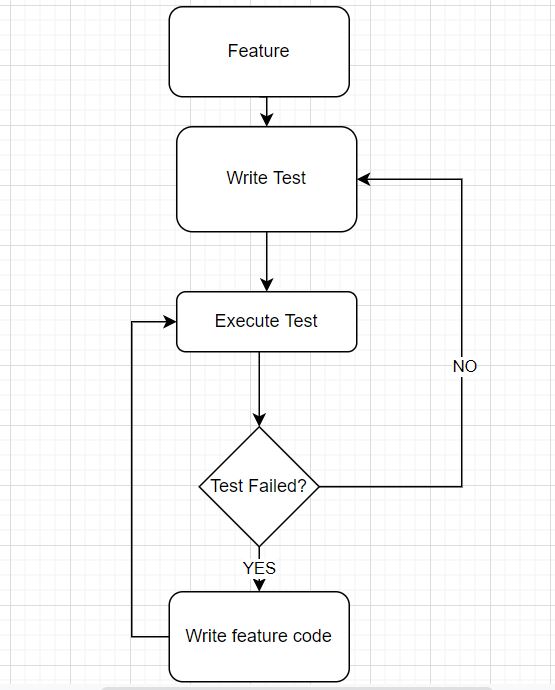Test-Driven Development (TDD) is a technique to write software by writing tests. This allows developers to be more proactive in their approach to what can break the software. In this post, I show 10 advantages to use test-driven development approach to build better software.
What is Test-Driven Development?
Let’s start with the fundamentals of test-driven development. Basically, it’s a technique to build software. Simply, you write tests for the code you are writing. How is this any different from regular software building?
As a developer, I have been at fault when I started to write code first. I see the problem and my immediate instinct used to be to write code. And then write tests for the code. On the surface, this sounds ok. But there is an imminent flaw. You are thinking backwardly about tests and then later realize that there might be something wrong with your code.
Instead, think about writing your test first. It is definitely not instinctive initially. But once you practice enough, it automatically becomes easier to adapt.

Write the test for the feature you are building. As shown above, in the diagram, the expectation of running the test would be to let that test fail. If the test does not fail, that means your test needs some tweaking. Keep correcting your test till the test fails. Once the test fails, now you have a clear idea of what or how to write your feature code.
Write your feature code and run the tests again till it passes. This allows developers to write modular code in small chunks. Once you have written code to pass the test, you can refactor your old and new code.
Test-Driven Development is a rigorous process, but one with rewards. Let’s look at what are the other advantages of using this technique to build software.
Advantages of Test-Driven Development
Here are the 7 advantages of test-driven development.
1. Interface First for the Code
As previously said, sometimes it takes time to adapt to this mindset of writing tests first. But once you start writing tests first, it forces you to think about the interface. This allows separating interface from implementation.
2. Immediate Feedback
Tests provide immediate feedback about the code you have written. If the tests pass, the feedback is that what you have written is adhering to the business requirements. Sometimes, if you are not able to write the tests, that means you need to deconstruct those requirements.
When actual user scenario, if code breaks, it warrants something our test cases have not covered. Writing tests should be easier and in turn, it should make writing code easier equally.
3. Confidence in Architecture
Unit tests, integration tests, and end-to-end tests provide feedback about the code and how the developers are making sure the code is meeting the business requirements. Depending on how well the tests are written, it provides feedback about the code as well as the architecture of the system. Better the tests, better the coverage for requirements. In short, it increases confidence in architecture.
4. Refactoring Made Easy
In the book Test Driven Development, Kent Beck pointed out TDD as a process to develop high-quality software. In this process, a developer follows Red Green Refactor.
- Red – It indicates to write a failing test
- Green – It indicates writing enough code to pass the test
- Refactor – Refactor the code you have written and keep the tests intact.
The last part of refactoring helps in improving the code quality. Making this a process also constantly provides feedback to make refactoring easy.
5. Reliable Process
TDD is a process. Like everything in software development, processes are great to a certain extent. If you follow the Agile development process, it is good when you have a small team. As soon as the team starts expanding, you can start seeing the cracks in the process.
TDD is part of an individual software developer’s routine. It is handy and helps in writing quality code. It also helps in getting started with the habit of writing tests. But as you become more proficient in writing tests and software, you can think about making an exception when to not write.
TDD provides a good feedback loop to improve the software writing process.
6. Easier Documentation
With Test-Driven Development, you write tests, meaningful tests. This provides another advantage of having easier documentation. Any new developer joining can immediately look at tests and understand the requirements. But of course, as the software grows in complexity, it can become harder to maintain the same level of simplicity. That’s why it’s important to follow Test-Driven Development rigorously.
7. Regression Detection
It is entirely possible that the developer who wrote tests and software did not think of every possible real-life scenario. After all, the software is complex. Something we don’t know, then we don’t know.
A random scenario breaks the software. The developer investigates the issue and finds out the bug. The developer realizes the tests written do not cover the scenario. We have detected the regression. This provides an opportunity to improve the software further by writing another test to fix the regression.
Conclusion
In this post, I showed the advantages of test-driven development. Writing good tests take time, but it is also rewarding. Test-Driven Development provides a good feedback loop to developers to improve the quality of the code. Take some time to learn about test-driven development, it’s worth it.
If you have any questions, you can always send them to me here.